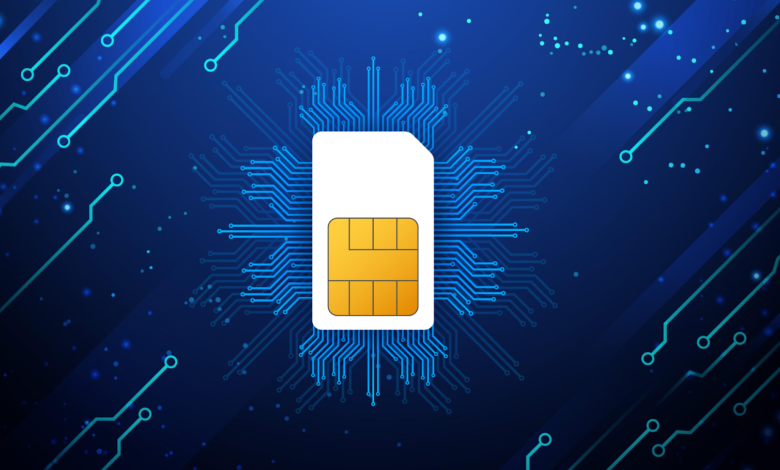The Rise of Travel Tech: How eSIM is Just the Beginning

In a world where staying connected has become as essential as having a passport, travel tech innovations are revolutionizing how we experience global adventures. Gone are the days of hunting for WiFi hotspots or paying astronomical roaming fees just to check emails or navigate unfamiliar streets.
In 2021, there were 1.2 billion eSIM-enabled devices, with the number expected to climb to 3.4 billion by 2025. This significant shift reflects how deeply technology has become intertwined with our travel experiences. From instant translation apps to smart luggage trackers, the tech transformation is just getting started, and at its heart lies a tiny but mighty innovation that’s changing everything about how we stay connected abroad.
eSIM Technology: Transforming the Travel Experience
eSIM technology has fundamentally changed how we connect while traveling, eliminating many of the pain points associated with traditional SIM cards. This innovation marks a significant leap forward in travel connectivity.
The Technical Evolution of eSIM
Unlike physical SIM cards that must be inserted into devices, embedded SIMs (eSIMs) are built directly into the device’s hardware. These programmable chips can store multiple operator profiles simultaneously, allowing users to switch between networks without physically swapping cards.
Japan has been at the forefront of embracing this technology, with lightning-fast networks and widespread adoption. Known for its technological innovation, Japan offers travelers seamless connectivity options that match its reputation for efficiency. With esim japan plans, travelers can instantly access high-speed data the moment they land, without searching for a physical store or dealing with language barriers. This innovation perfectly complements Japan’s high-tech travel infrastructure, from bullet trains to robot hotels.
Game-Changing Benefits for Global Travelers
The practical advantages of eSIM technology for travelers are substantial. Border crossings no longer mean connectivity gaps—travelers can activate their new country’s profile before landing. This seamless transition eliminates the dreaded “no service” period when arriving in a new destination.
From a cost perspective, travel tech options like eSIMs typically offer significantly better rates than traditional roaming plans. Many providers let travelers purchase data packages tailored to their specific needs and destinations, often at a fraction of what carriers charge for international roaming.
There’s also an environmental angle worth considering—eSIMs eliminate the plastic waste from millions of disposable SIM cards, making them a more sustainable option for eco-conscious travelers.
The Evolution of Travel Connectivity
The journey from payphones to pocket internet has been nothing short of remarkable. Remember when international communication meant hunting down phone booths and hoarding calling cards? Those days feel increasingly distant as we’ve witnessed a complete transformation in how travelers stay connected.
From Pay Phones to Pocket Internet
Just decades ago, travelers relied on postcards, telegrams, and occasional expensive international calls to communicate while abroad. The 1990s brought calling cards and internet cafés, offering brief windows of connectivity at premium prices. By the 2000s, smartphones began changing everything, but connectivity remained a complex puzzle of roaming agreements and astronomical fees.
Traditional SIM Cards: The First Revolution
When physical SIM cards first appeared, they represented true innovation for international travelers. Instead of paying exorbitant roaming charges, travelers could purchase local SIMs at their destinations. This offered more affordable data and calling options, but came with significant drawbacks—language barriers when purchasing, the need for different SIMs in each country, and the ever-present fear of losing that tiny plastic chip.
The limitations of physical SIM cards created friction points that increasingly tech-savvy travelers found frustrating, setting the stage for something better to emerge.
Beyond Connectivity: The eSIM Ecosystem
The eSIM revolution extends far beyond basic connectivity, creating an entire ecosystem of solutions designed for today’s increasingly mobile population. Let’s explore how these innovations are specifically benefiting frequent travelers.
Multi-Profile Management for Digital Nomads
Digital nomad tools have become increasingly sophisticated, with eSIM technology ranking among the most valuable. Digital nomads often juggle multiple work projects and personal communications across different time zones and countries.
eSIMs allow these location-independent professionals to maintain separate profiles for work and personal use. A digital nomad might keep their home country number active for client calls while using a local data plan for everyday connectivity—all on the same device.
Strategic profile switching helps nomads optimize costs and connectivity based on their current location, making the multi-country lifestyle more manageable.
Enhanced Security Features
Mobile connectivity for travelers through eSIM technology offers significant security advantages over physical SIMs. If a device is lost or stolen, users can remotely deactivate their eSIM profiles, protecting sensitive data and preventing unauthorized usage.
Unlike physical SIM cards that can be removed and potentially compromised, eSIMs are integrated into the device architecture, making them significantly more difficult to tamper with. This provides peace of mind for travelers in unfamiliar locations.
These security enhancements are particularly valuable for business travelers handling sensitive information while abroad.
The Digital Transformation of Travel Management
eSIM technology has streamlined travel administration for both individual adventurers and corporate travel departments. With digital management platforms, travelers can purchase, activate, and monitor their connectivity from anywhere.
This digitalization eliminates paperwork and simplifies expense management—usage reports are easily accessible for reimbursement purposes. For businesses, centralized management platforms allow IT departments to provision connectivity for employees before they depart.
Looking beyond current capabilities, a new wave of complementary travel gadgets is emerging that builds upon this foundation of seamless connectivity.
The Next Frontier: Emerging Travel Tech Beyond eSIM
While eSIM technology has revolutionized connectivity, it represents just one facet of the broader travel tech revolution. Innovations across multiple categories are creating a more seamless, enjoyable travel experience.
AI-Powered Travel Assistants
Artificial intelligence is transforming how we navigate foreign environments. Real-time translation tools now allow conversations across language barriers, while AI assistants can recommend activities based on personal preferences and current location.
Predictive connectivity solutions are learning travelers’ patterns, automatically suggesting optimal networks and plans for upcoming destinations. These intelligent systems remember your preferences and anticipate needs before you even realize them.
The integration of travel tech with artificial intelligence is creating more personalized, frictionless experiences for international travelers.
Integrated Smart Travel Gadgets
A new generation of travel gadgets is emerging that leverages the constant connectivity that eSIM technology provides. Group travel connectivity hubs allow multiple devices to share a single data connection, ideal for families or business teams traveling together.
Wearable tech is increasingly eliminating smartphone dependency. From smartwatches with built-in eSIM capabilities to connected glasses providing heads-up navigation, these innovations are freeing travelers from constantly checking their phones.
These devices create a more immersive travel experience while maintaining essential connections to information and loved ones.
| Travel Tech Category | Key Benefits | Current Limitations | Future Potential |
| eSIM Technology | Instant activation, multiple profiles, no physical swapping | Limited device compatibility, learning curve | Universal adoption, seamless profile switching |
| Mobile Translation Tools | Real-time conversation translation, menu/sign reading | Requires an internet connection; accuracy varies | Offline functionality, perfect contextual translation |
| Smart Luggage | GPS tracking, built-in charging, and weight sensors | Battery limitations, airline restrictions | Self-following capability, advanced security features |
| Connectivity Sharing Devices | Multiple device connection, battery backup | Data limitations, additional item to carry | Satellite connectivity, unlimited sharing |
| AR Navigation | Immersive directions, landmark identification | Battery drain, smartphone dependency | Lightweight glasses integration, holographic guidance |
FAQs
When did eSIM technology start?
The progress of eSIM technology has been significant. It was first introduced in the consumer market in 2016 and started gaining recognition when Apple launched its eSIM-only iPhone. Since then, other manufacturers and industries have steadily adopted the technology.
Why are we switching to eSIM?
eSIM is more secure than a physical SIM because it can’t be removed if your iPhone is lost or stolen. With eSIM, you don’t need to obtain, carry, and swap physical SIM cards (which can also be lost), or wait for them to arrive by mail. You can have two eSIMs active on supported iPhone models at the same time.
What is the rise of eSIM?
Projections estimate that 75% of all smartphones will be eSIM-connected by 2030. This growth is driven by the rising adoption of IoT-connected devices in machine-to-machine applications and consumer electronics, which account for around 70% and 30% of the market share for each respective technology.
The Connected Traveler’s Future
The travel tech revolution has only just begun, with eSIM technology laying the groundwork for increasingly seamless global experiences. As these technologies continue to evolve, the gap between being “at home” and “away” is rapidly shrinking, at least from a connectivity perspective.
Tomorrow’s travelers will benefit from even more integrated solutions, with connectivity becoming an invisible utility rather than something to actively manage. The most exciting innovations will likely come from unexpected combinations of these technologies, creating entirely new ways to experience the world.
What remains constant is the human desire to explore and connect—travel tech simply makes that fundamental need easier to fulfill, no matter how far from home we roam.







